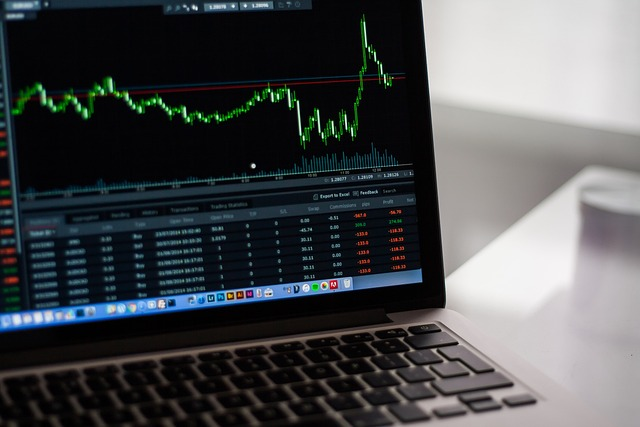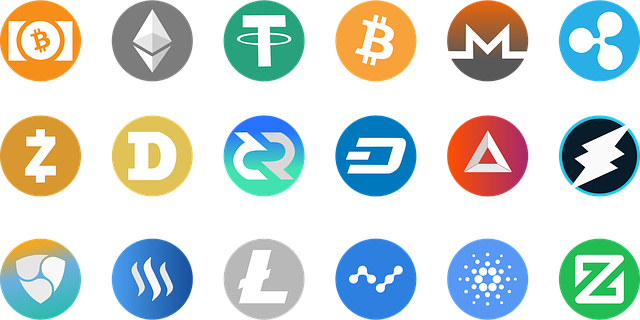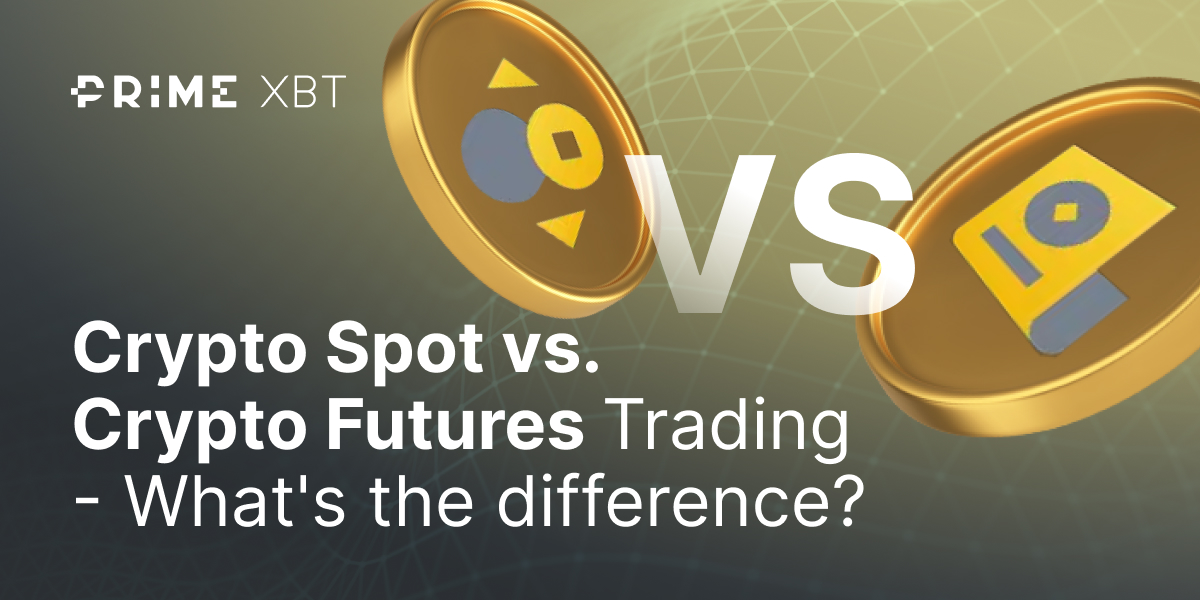If you have been trading Cryptos for any amount of time, you might’ve come across the terms spot price, futures price and futures contracts.
The difference is very simple – when you trade a Cryptocurrency’s spot price you are trading its current market price and when you trade a futures contracts you trade the future price of a Cryptocurrency. So when you open a spot trade, you get the asset or the CFD immediately, whereas when you open a futures contract, the trade is made at a predefined price in the future.
When trading CFDs like the ones PrimeXBT offers, you can trade both when the price rises or falls, so you can technically take advantage of all price fluctuations.
We’ll cover how futures contracts work later on in the article, but they also allow you to trade both upwards and downwards movements.
Most reputable brokers offer both spot and futures trading, allowing you to set up your strategy across multiple time-frames, which in turn increases your chance of success.
Both of these types of trading have their own benefits, so keep reading to find out how to use them.
What is spot trading in Crypto?
Spot trading in Crypto is when you place a trade, and there is an immediate settlement or immediate delivery of the underlying asset or an immediate sale of the underlying asset (or price). Sounds complicated right? It really isn’t – basically, the spot market is like going into a store; you go in, choose what you want, pay and leave with with your products.
Or, in our case, putting Bitcoin, Ethereum, Solana, or any of the other many Cryptocurrencies PrimeXBT offers in your wallet, or selling any Cryptos you have. If you are trading spot markets with CFDs then that means that any transaction you make is done at the current market price.
Of course, PrimeXBT also offers CFDs, which allow you to trade both upward and downward movements. This is a great benefit because it allows you to take advantage of the frequent price movements Cryptos experience.
The most common and simple strategy when trading the spot markets is to buy when the price increases and close the trade when the positive trend ends. Or you can sell during downward price movements and close the trade when the trend ends.
There are more complex and involved trading strategies that carry higher risk, but these are better left to more experienced traders.
Advantages of spot trading
Being able to act the moment the market price changes is a great benefit. It can help you take advantage of price changes or limit your losses if you already have trades open.
To do so, you simply open the opposite trade to the one you already open. So if you have a “buy” trade open, you could open a “sell” trade. If the price moves against the trade you have open, the opposite one will profit, recovering some of the losses of the first. This is also called hedging, which you can do with futures contracts but we will cover that later on.
Additionally, owning the asset can help diversify your “portfolio” (this is the collection of all the assets you have). If you build your portfolio correctly, you will be able to average out “negative” market movements protecting the overall value of your assets than if you had just one type of asset.
Disadvantages of spot trading
One of the first and most obvious disadvantages is that spot trading is very hands-on. Although there are ways to automate it, these tend to have a steep learning curve, require some technical know-how and sometimes even a subscription or extra purchase.
Another disadvantage when spot trading real assets is being unable to sell them when prices start dropping due to the lack of liquidity. Basically liquidity is the amount of people on a market looking to buy or sell. If there isn’t anyone interested in buying your asset at the price you are asking, then that might cause you even more losses.
Of course, if you work with a broker that offers CFDs as well, you can get the best of both worlds – the ability to act immediately when an opportunity presents itself and sell when prices are dropping. Or trade future prices – which is our next point.
Finally, this trading method usually carries much higher fees than futures.
What is futures trading in Crypto?

A Crypto Futures contract allows you to speculate (that’s trader talk for using the data you’ve found to make an educated guess) whether the price of a Crypto will rise and fall before the expiration date of the contract.
If you are correct in your estimation of the underlying asset price, then you profit. If not, you lose the value of the contract and the difference between the “guessed” price and the current market price. Although that may sound like a big sum, generally a BTC futures contract carries lower fees than a BTC spot trade.
There are a few more terms that may be useful to you if you’re interested in trading on the futures markets.
When you “go long” you are buying the futures contract expecting the price of the underlying Crypto to rise or for future price movements to increase. When you trade futures and you “go short”, you are selling the contract expecting the price of the Crypto to drop.
Of course, if your broker offers leverage, you can increase the size of your trade with a smaller amount of capital. But keep in mind that trading futures with leverage requires margin i.e. an amount of capital used in exchange for the leverage. If you’d like more information on margin, you’re in luck, we have an entire article about it.
Advantages of futures trading
As mentioned above, spot and futures trading can be used together to best realise the market’s maximum potential. Trading futures also usually carry lower fees than trading an asset’s spot price.
Another benefit of this trading method is the ability to take advantage of future events. For example, the Bitcoin halving or any type of network consensus or protocol change that could predictably affect the price. Previous halvings, for example, saw the price of Bitcoin skyrocket after the event.
With futures trading, you can take advantage of that type of situation and position yourself to benefit from the entire post-event rally.
You can also use futures trading to “protect” your open positions against future market movements. For example, if you have a “sell” trade open on Bitcoin before the halving, you can open a “buy” future contract around the future date when the event will happen. If the price rises (which is negative for your first opened trade) the futures contract will grow.
Disadvantages of futures trading
The biggest disadvantage when you trade futures is that it requires more technical knowledge and experience than spot trading. Additionally, it’s not ideal in volatile markets as the success of your speculation is dependent on your market analysis which becomes much more challenging when markets are choppy.
Crypto Futures trading expiration date
Unlike spot trading, futures have expiration dates. This needs to be considered when you are creating your strategy or opening a futures contract as a hedge. When trading on the spot market, on the other hand, at least in theory, a trade can remain open indefinitely with enough margin. This means even if the market moves against the spot trade you’ve opened, you can keep the trade until the market turns allowing your trade to recover.
Comparative analysis: futures vs. spot trading

Simplicity of trading
Trading the future price of an asset may require you to perform extensive research and analysis and follow market news to be aware of upcoming events. The pricing structure may also be slightly complicated for new traders.
Trading spot allows for immediate delivery of the underlying Crypto or the spot contract. Although it’s always a good idea to have as much data as possible no matter what type of trading you are engaged in, again, in theory, if you see a confirmed and strong trend emerge, you could act and take advantage of the opportunity immediately, but that obviously involves higher risk.
Leverage and margin
Leverage and margin are available for both spot trading and futures markets.
Risk management
You can manage risk effectively both on the spot market and futures markets. Futures are often used as a hedge to protect open spot trades. When spot trading, you can set a stop loss and take a profit that will automatically close your trade when it reaches a predefined rate. This can protect your trade against price reversals and runaway losses.
How to choose between spot and futures trading
Choosing between futures trading and spot trading can be challenging. Luckily there is a huge library of articles, videos and tutorials to help you decide. That’s why this article will only give you a bit of an outline.
First, no matter what you choose to trade, it’s always a good idea to have a plan or what’s called a trading strategy in the world of finance. This will help define the amount of capital you’d like to use to trade, your risk appetite, risk management, the type of trading you’d like or believe will be successful and, of course, your goals.
Ultimately, both types of trading are tools at your disposal. As mentioned previously in the article – spot trading is like a hammer: immediate and effective when you need it to hit the current market price on the head. Futures trading is more like a measuring tape; it’s an amazing tool when you know how to use it, and it requires a bit more work afterwards.
And yes, sometimes you need both a hammer and a measuring tape.
Just like every tool, though, if you don’t know how to use it, you can end up hurting yourself instead of building something.
Learning as much as you can about both the spot market and futures trading is one of the many things you can do to ensure your success; I guess you’ve already taken the first step by reading this article.
Conclusion
The spot market and futures market can be effective for any level of trader. In fact they are so effective they are leveraged by both professional traders and institutions like banks.
Having the right level of knowledge and the right plan can help you leverage both futures trading and the spot market to your advantage.
Each type of trading carries its own advantages and disadvantages, some that weren’t even covered in this article, so keep succeeding and keep learning!
Which is better, spot or futures trading?
They are both equally valuable tools at a trader's disposal.
Are futures more expensive than spots?
Generally fees associated with futures trading are lower than spot trading.
Should I trade spot or futures?
You should use the type of trading that best fits your goals, strategy and knowledge level.
The content provided here is for informational purposes only. It is not intended as personal investment advice and does not constitute a solicitation or invitation to engage in any financial transactions, investments, or related activities. Past performance is not a reliable indicator of future results.
The financial products offered by the Company are complex and come with a high risk of losing money rapidly due to leverage. These products may not be suitable for all investors. Before engaging, you should consider whether you understand how these leveraged products work and whether you can afford the high risk of losing your money.
The Company does not accept clients from the Restricted Jurisdictions as indicated in our website/ T&C. Some services or products may not be available in your jurisdiction.
The applicable legal entity and its respective products and services depend on the client’s country of residence and the entity with which the client has established a contractual relationship during registration.




